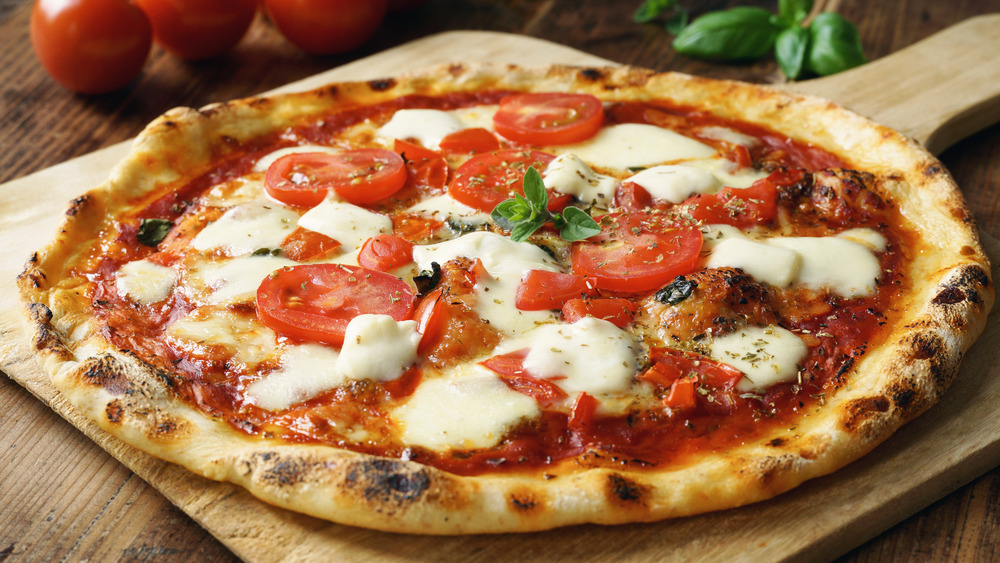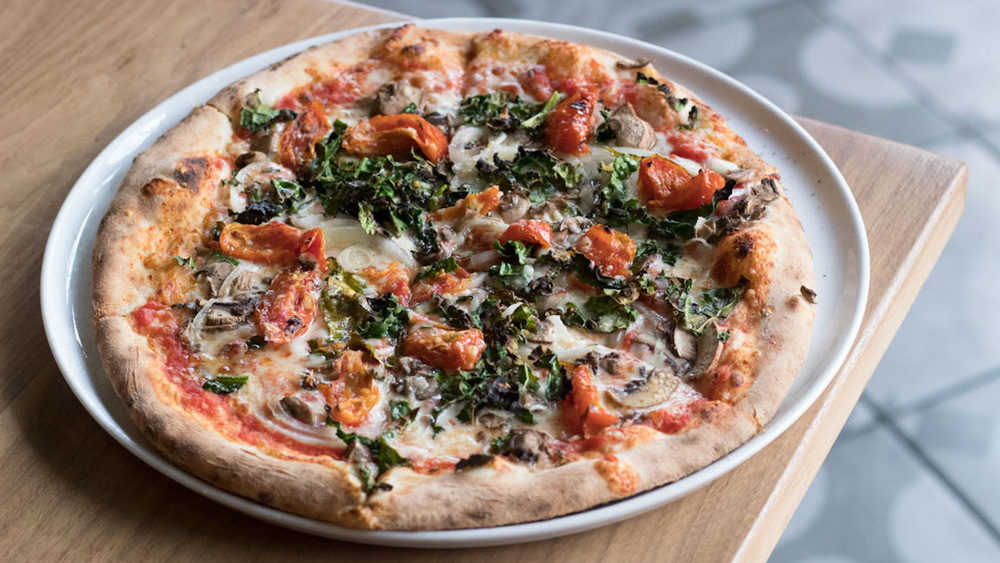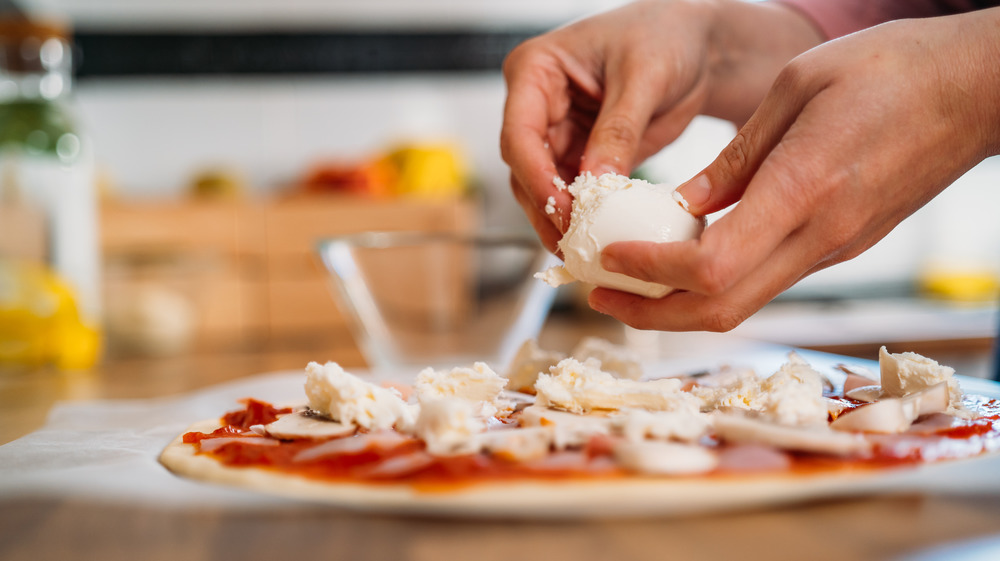Mistakes You've Been Making With Your Homemade Pizza
Making a pizza at home can feel incredibly challenging when you first start. According to Bob's Red Mill, knowing how much time it takes to proof your dough, how to knead your pie just right, and even how long to let your dough rest can change the texture and taste of your final product. Keeping track of each aspect could make anyone's head spin, and even with practice, sometimes certain techniques and cooking steps feel like a mystery, no matter how many times you do them.
To help clear the air, Mashed consulted Areli Armendariz, general manager at Vero Pizza inside Denver Central Market in Denver, Colorado, about all the ways you can mess up while making pizza at home. With a bit of Armendariz's advice, you can avoid all of these major pitfalls that plague the homemade pizza process and end up with a final pizza that you can proudly show off.
The problems start before the pizza hits the oven
"A few common mistakes are just downsized versions of what we deal with on our commercial wood fired pizza oven," Armendariz said. "It all starts with proper dough handling and stretching."
The first common issue you face when making pizza dough occurs when the dough you just stretched out quickly snaps back to its original shape (via The Kitchn). To combat this issue, the dough needs some time to sit before stretching. "Allow your dough to REST," Armendariz recommends. "You can make an amazing dough, but it should really be done at least a day in advance so the gluten can relax after it's made, otherwise you can have a dough that can be difficult to stretch properly."
Even if you prevent the dough from snapping back too quickly, you haven't escaped every pitfall. "Uneven dough can cause under cooking [or] over cooking and create a chain reaction of problems," Armendariz said. "Thin spots form holes in the burn spot, causing toppings to fall through [the] pizza and cause the pizza and toppings to stick to the oven [or] your pan, causing sadness."
You can avoid this error with some attention to detail and a rolling pin. "Once relaxed, [the dough] needs to be rolled evenly," Armendariz continued. "A pre-measured rolling pin (or even a wine bottle in a pinch!) can do an excellent job of making sure the dough is even." This is especially true if you're not comfortable with a hand stretching technique in your own kitchen.
Don't be afraid to bump up the oven temperature
Once your pizza has properly relaxed, stretched, and received its sauce and toppings, the time has come to pop it in the oven. At this stage, you face another problem that stands in the way of the perfect pie. "The oven needs to be HOT," Armendariz said. "We're talking 450 minimum on a home oven. A pizza stone is recommended, but if that's not available, a pan should suffice so long as it has flour or semolina underneath to prevent sticking."
As you start to put the pizza in the oven, another problem has popped up — you notice the toppings or even the whole pizza have stuck to the pan and won't cleanly slide into the oven. Don't feel alarmed, as Armendariz has a solution. "Keep the bottom of your pie clean," Armendariz says. "Excess cheese, excess sauce etc. will burn, and have the potential to make a hole and/or stick to your cooking surface. Be sure that your pie can still slide by having a layer of semolina or flour underneath."
If you follow all of these tricks to the letter, you can guarantee a pizza-making experience with less stress that yields an amazing pie and incredible leftovers.


